Testimony of Vincent Sapienza Chief Operating Officer New York City Department of Environmental Protection before the New York City Council Committee on Environmental Protection
February 3, 2023
Good morning, Chair Gennaro and members of the Environmental Protection committee. I am Vincent Sapienza, the Chief Operating Officer at the Department of Environmental Protection (DEP). I am here today with my colleague Deputy Commissioner Angela Licata to speak about the City’s investments to improve harbor water quality through operating permits and a consent agreement with the New York State Department of Environmental Conservation. My testimony will touch on the DEP-related bills being heard today, and I will then turn to my colleagues Keith Kerman from the Department of Citywide Administrative Services (DCAS) and Gina Bocra from the Department of Buildings (DOB) to speak on the other legislation.
Four of the bills being heard today relate directly to DEP. Three of them propose new reporting requirements: Intro. 102, which would require a map of green roofs to be posted online; Intro. 533, which would require reporting on progress toward decreasing the presence of sewage and stormwater contaminants in the city waterways; and Intro. 531, which would require reporting on the condition of drainage infrastructure. DEP already reports extensively on these topics, so we would like to work with the Council to ensure these bills complement current reports. The fourth bill, Intro. 532, relates to pumpout infrastructure for boaters. Several agencies and private entities are involved in this area, so we would like to work with the Council and with our partner agencies to determine the best path to achieve the goals of this bill.
Combined Sewer Overflows and Long-Term Control Plans
New York City residents who pay a water bill have invested $4.3B in recent years to reduce the quantity of combined sewer overflows (CSOs) into local waterways. Those investments and improvements to treatment technology have been paying off, as we now regularly see dolphins chasing large quantities of smaller fish that are thriving in our rivers. The waters surrounding New York City are cleaner and healthier than they have been since the Civil War. Still, there is a lot of work to do, and we will ask water bill payers for many billions of dollars more in the coming years.

As background on CSOs, about 60% of the city’s sewers are a combined sewer system, meaning that sanitary wastewater and stormwater both flow into the same sewer pipes. This combined wastewater is conveyed to and then treated at a Wastewater Resource Recovery Facility (WRRF). Our 14 WRRFs treat about 1.3 billion gallons of wastewater each dry weather day. Those plants have a combined capacity to treat up to 3.8 billion gallons per day, meaning they can accept more than 2 billion gallons per day of stormwater. When the intensity of a storm exceeds that capacity, the excess water is released directly into a waterway without treatment. This release is a CSO.
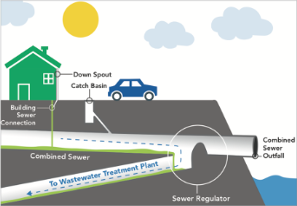
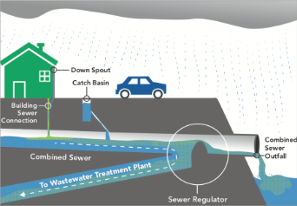
CSOs are not illegal. They are authorized by the US Environmental Protection Agency (EPA) and permitted by the NYS Department of Environmental Conservation (DEC), but our collective goal under the Clean Water Act (CWA) is to continue to reduce the quantity and frequency of CSOs by incrementally adding more hard, grey infrastructure to handle water and more green infrastructure to reduce to the volume of water entering the sewer system.
To achieve that goal in a structured way, DEP has worked with DEC, environmental groups, and the public to develop and implement Long-Term Control Plans (LTCP). There are eleven LTCPs, each representing a discreet geographic area. The LTCPs incorporate a combination of gray and green infrastructure, and each plan is specifically tailored around the unique characteristics of each watershed and waterbody. The work is consistent with the Federal CSO Policy and EPA Guidelines, and with the water quality goals of the CWA.
The eleven LTCPs are dedicated to:
- Alley Creek
- Westchester Creek
- Hutchinson River
- Flushing Creek
- Bronx River
- Gowanus Canal
- Coney Island Creek
- Flushing Bay
- Newtown Creek
- Jamaica Bay and Tributaries
- Citywide/ Open Waters
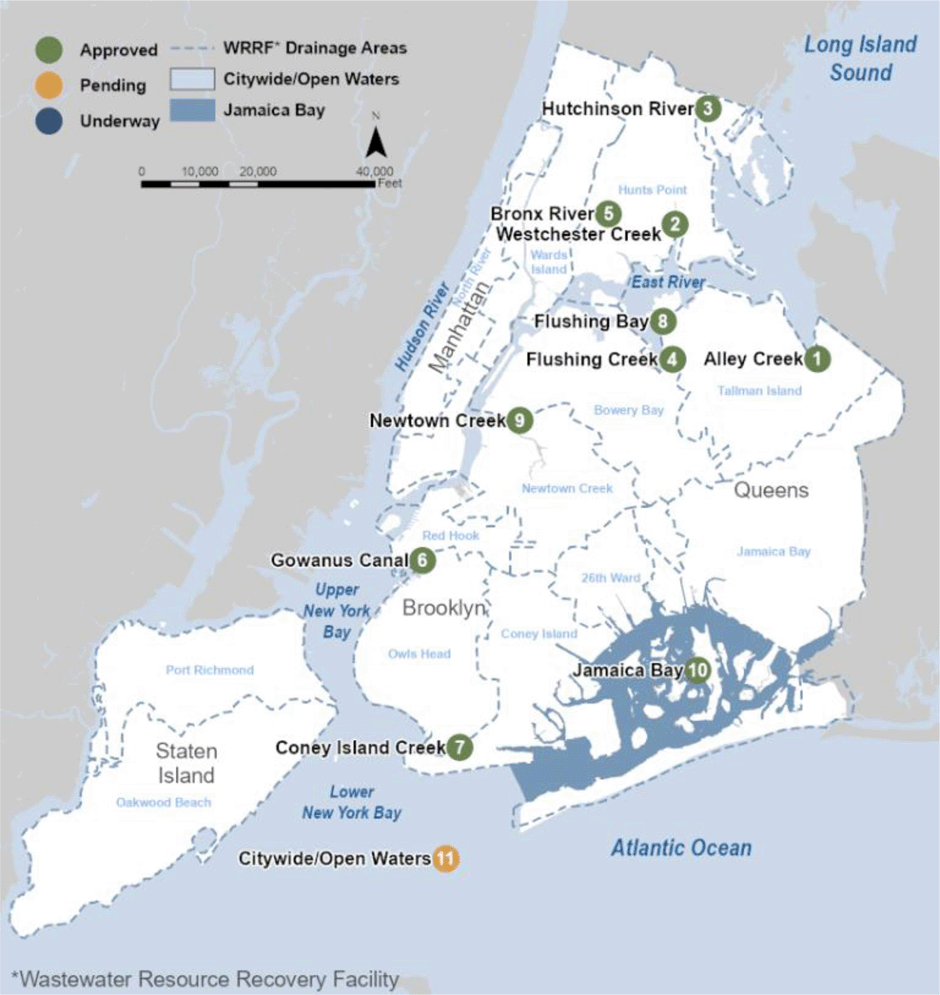
As indicated in the table below, the LTCPs were developed through extensive sampling and modeling, with hundreds of alternatives evaluated. After public comment and review, ten of the eleven LTCPs were approved by DEC, and more than $6B in committed work is underway.
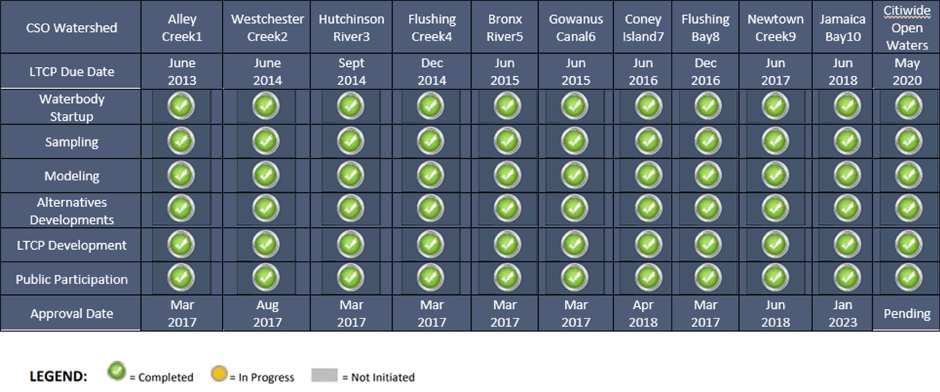
These CSO reduction efforts are reported in quarterly updates, each of which can be found on DEP’s website. Additionally, we have been publishing a comprehensive annual CSO BMP Report for more than a decade. Further, the City has, since 1909, been doing an annual Harbor Survey, to sample and analyze waters at dozens of locations around the City. Those reports are on our website, too. Water quality data from our Harbor Survey Monitoring Program are also available on NYC Open Data. Also, DEP publishes an annual Green Infrastructure Report. Additionally, DEP publishes an annual Stormwater Management Program Report. Moreover, DEP publishes an annual State of the Sewers Report about drainage. Virtually all of the information and data that are requested in Intro. 533 and Intro. 531 can be found in these resources.
Municipal Separate Sewer System
Our water quality efforts are not limited to combined sewer areas. Other areas of the city are served by the Municipal Separate Sewer Systems (MS4). In MS4 areas, stormwater does not combine with sanitary sewage. Rather, stormwater from streets and rooftops flows through separate pipes directly into nearby waterways. Stormwater is cleaner than sanitary sewage, though it can pick up sediment, street trash, and other types of pollution along the way.
DEP has worked with DEC to develop and implement a Stormwater Management Program (SWMP) Plan that includes numerous initiatives designed to reduce pollution in stormwater runoff. The first plan was developed pursuant to a 2015 MS4 permit that DEC issued to the City. DEC issued a modified Citywide MS4 permit in August 2022.
A key component of the SWMP is the Construction and Post-Construction Program (C/PC Program). The C/PC program requires management of stormwater on construction sites so that eroded soil and other construction wastes do not become a source of stormwater pollution. Some projects also require construction of stormwater management practices (SMPs) on site to prevent stormwater from entering the sewer system and reduce the pollutants being washed from the site. These are long-term management practices, which will continue to operate after construction is complete. The C/PC program is an enhanced regulatory program. It includes permits, inspections, and enforcement, based on the existing DEC Construction General Permit program.
DEP initially administered this permitting program only in the MS4 area, but Local Law 91 of 2020 extended the program to the combined sewer area as well, creating the Unified Stormwater Rule. Now, any construction project anywhere in the five boroughs that disturbs 20,000 square feet or more of soil or adds an additional 5,000 square feet of impervious surface must be permitted and may be required to install stormwater management practices. These requirements will create more pervious and resilient properties across the city. I thank the Council for their partnership in implementing this monumental program.
Through the MS4 Industrial and Commercial Stormwater Program (I/C Program), DEP is responsible for the inspection and enforcement portions of the State Pollution Discharge Elimination System (SPDES) Multi-Sector General Permit for Stormwater Discharge from Industrial Activities (MSGP) at privately owned facilities in the MS4 area. DEP also inspects an inventory of unpermitted facilities to assess their industrial activities’ exposure to stormwater and to determine whether the facilities generate significant contributions of pollutants to impaired waters and may require SPDES permit coverage.
Other programs in the SWMP include: the Pollution Prevention Good Housekeeping (PP/GH) Program, which requires City agencies to perform regular assessments of their facilities and operations to determine sources of pollutants potentially generated by their facilities and operations and to evaluate the adequacy of the stormwater control measures (SCMs) they implement; the IDDE program, which requires City agencies to track down and eliminate any illicit discharges into the MS4; and a broad range of programs to prevent floatable and settleable trash and debris from reaching local waterbodies through the MS4.
Green Infrastructure
As I have touched on, a key component of our stormwater management programs is the use of green infrastructure (GI). New York’s GI system is the most extensive in the country. In just the last decade, our GI program has:
- Constructed more than 11,000 assets,
- Managed more than 2,000 acres,
- Added more than 660,000 square feet of pervious surfaces to streets and sidewalks, and
- Created more than 14,000 acres of Bluebelts across the city.
DEP utilizes a variety of assets, or types of infrastructure, to manage stormwater, including rain gardens, infiltration basins, permeable pavers, and green roofs. All GI is engineered to make land and buildings more efficient at managing stormwater on site, so that the water does not enter the sewer system. More information about the GI program is available in the Green Infrastructure Annual Report and the Stormwater Management Program Annual Report, both of which are available on the DEP website.
DEP manages a public, city-wide GI map that includes all the green roofs funded by DEP, as well as those for which DEP has completed a technical review. This map provides the locations and details about GI around the city, in line with what Int. 102 calls for. I should note, however, the private owners can green their roofs without City approval, and so those locations might not be reflected on the map.
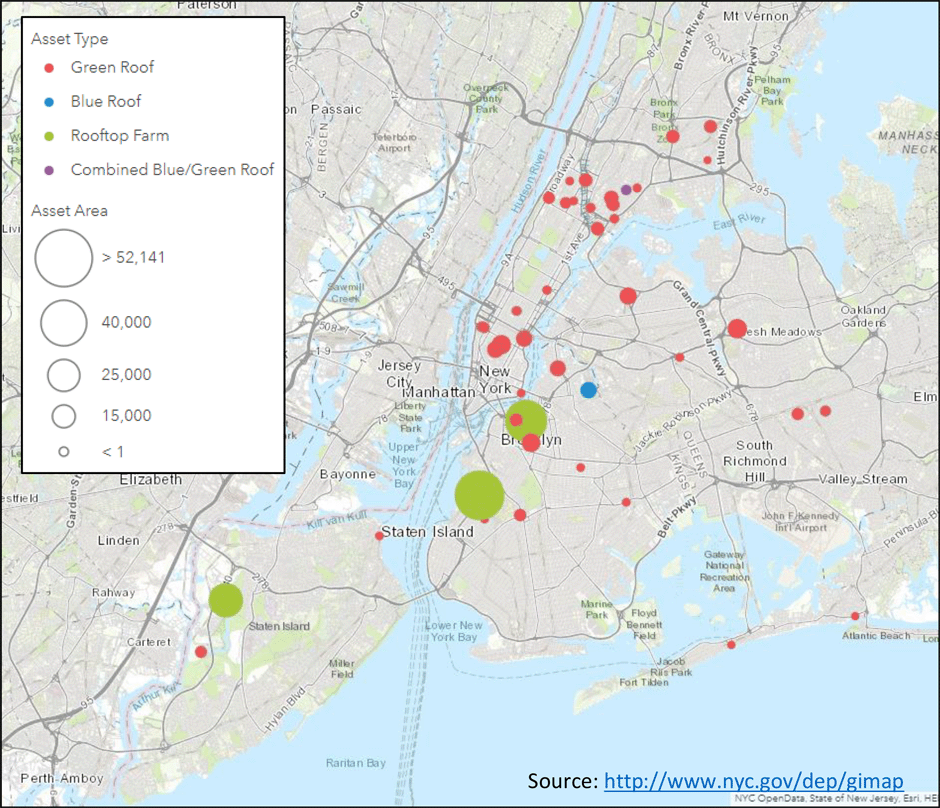
We strongly encourage the use of green roofs and other GI wherever possible. We offer a grant program to make it easier to install these assets. Many green roofs have been funded through that grant program, including the two biggest rooftop assets: the green roof at the Brooklyn Navy Yard and the green roof at Liberty View Plaza in Sunset Park.
We encourage everyone to incorporate stormwater management practices on their properties. Even efforts that seem small, such as installing a rain barrel, can have an impact. We are always happy to work with Council Members to encourage these practices among their constituents.
Thank you for the opportunity to testify on this topic and on these bills. I will now turn to my colleagues to speak about the additional legislation being considered today and then will be happy to answer any questions that you have.




